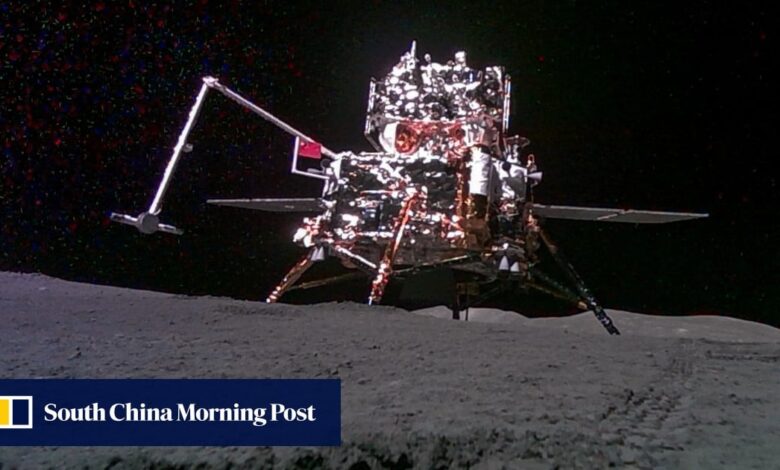China’s historic Chang’e-6 selfie from moon’s far side taken with AI

The tracks of the rover, developed by the China Academy of Space Technology (CAST), can be identified under the morning sunlight in the released image, along with the lander, its solar panels and robotic arm, with the ascent vehicle sitting on top of it.
The mini-robot is much smaller than its predecessors – Yutu-1 and Yutu-2 each weighed as much as two adults – but boasts “advanced autonomous capabilities and highly integrated, lightweight hardware which is a testament to the team’s breakthroughs in artificial intelligence”, the report said.
Astrophysicist Quentin Parker, an astrophysicist from the University of Hong Kong, said if the rover was autonomous and was making choices based on input data from cameras, then it would be the first use of AI on a lunar rover.
“But other systems on various Chang’e spacecraft, as well as recent lunar probes developed by countries other than China, may have also made use of AI,” he said.
Harvard astronomer Jonathan McDowell commented that the term AI in the context of the Chang’e-6 images was “rather meaningless”.
“But it does show the CAST software team’s capabilities and the ability to programme complex activities into a very small spacecraft,” he said.
According to the newspaper report, the mini-rover was mainly tasked with taking selfies and validating autonomous intelligent technologies, which are crucial for the future of China’s deep space exploration.
China is developing larger, more complex lunar probes for its Chang’e-7 and 8 missions, with the intention of building a basic moon base by 2028.
The country aims to work with global partners to expand the base into a full-size international lunar research station for long-term scientific exploration and resource utilisation at the moon’s south pole.
China Space Daily did not reveal how many selfies were snapped by the mini-rover and it remains unclear if the vehicle survived to photograph or film the lift-off of the ascent vehicle with the collected samples on board.
The rover was not equipped with thermal control devices and would have to contend with the extremely high temperatures of the lunar surface.
The 53-day Chang’e-6 mission is the first to retrieve rocks from the lunar far side, which constantly faces away from us because the moon is tidally locked to Earth. All previous samples – collected by robotic or crewed missions from the US, Soviet Union, and China – are from its near side.
Chang’e-6 blasted off from the Wenchang spaceport in southern China’s Hainan Island on May 3 and is expected to touch down in the northern autonomous region of Inner Mongolia around June 25.
The spacecraft is currently orbiting the moon with its precious cargo onboard and is waiting for the best time to begin its journey back to Earth.



